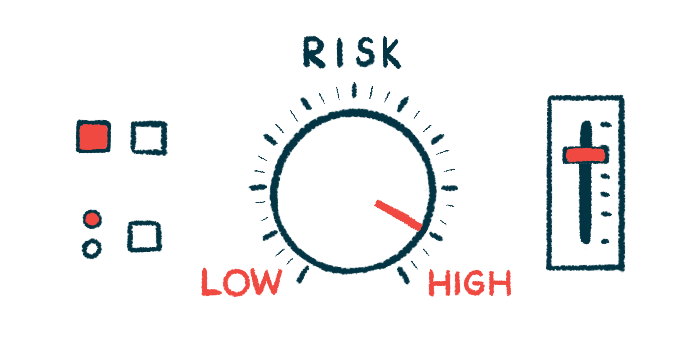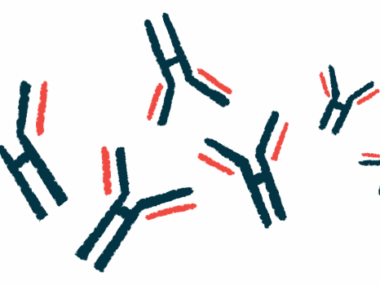Smoking tied to disability risk in AQP4-NMOSD patients: Study
Similar results seen with vascular risk factors like high blood pressure
Written by |

Smoking is associated with a significantly higher risk of residual disability from onset attack in neuromyelitis optica spectrum disorder (NMOSD) patients with antibodies against the AQP4 protein, a new study showed.
Similar results were seen for the presence of nonsmoking vascular risk factors (VRF) such as high blood pressure, abnormal fats in the blood, diabetes, or high body mass index, known as BMI, a measure of body fat based on height and weight.
The presence of at least one of these nonsmoking VRFs was also associated with a higher risk of worse visual recovery from the onset attack.
Among smokers, the researchers also found a detrimental effect on attack recovery in people with myelin oligodendrocyte glycoprotein antibody-associated disease (MOGAD), a related condition.
“These findings suggest that active management of VRFs and smoking cessation may be important for optimising patient outcomes in MOGAD and AQP4-NMOSD,” the researchers wrote.
The study, “Smoking status and vascular risk factors as predictors of disability in AQP4-NMOSD and MOGAD,” was published in the Multiple Sclerosis Journal.
Investigating smoking, other vascular risk factors, in NMOSD patients
NMOSD and MOGAD are rare autoimmune conditions marked by abnormal immune attacks against healthy cells of the brain and spinal cord. These immune attacks can result in transverse myelitis, or spinal cord inflammation, and optic neuritis — inflammation of the nerve that sends and receives signals from the eye.
Patients commonly experience relapses, or episodes of increasing symptoms that affect vision and/or muscle strength, which are separated by periods of disease remission.
Most NMOSD cases are associated with self-reactive antibodies that target AQP4, a protein present in nerve-supporting cells. MOGAD, meanwhile, is linked to self-reactive antibodies against myelin oligodendrocyte glycoprotein, a component of the protective layer around nerve fibers.
Although vascular risk factors overall, including smoking, have been reported to have adverse effects in NMOSD patients positive for anti-AQP4 antibodies, “there are limited studies focusing on the prevalence of VRF and its correlation with neurological disability in AQP4-NMOSD,” the researchers wrote.
Now a team led by scientists at the University of Oxford sought to learn more about the impact of VRF and smoking on recovery from a patient’s onset attack. To that end, the team looked back at data from 206 AQP4-NMOSD patients and 236 MOGAD patients followed at two specialized services in the U.K.
The AQP4-NMOSD patients had a median age of 47 at disease onset. Their maximum score was a nine on the standard Expanded Disability Status Scale (EDSS), a commonly measure to assess patient disability. That score meant that patients were bedridden, and the maximum visual disability severity was no perception of light.
The majority of those with AQP4-NMOSD (75%) never smoked, while 15% were past smokers and 10% current smokers. Moreover, 47% had at least one VRF.
Smokers have 3 times higher risk of residual disability from onset attack
Overall, 41% of the AQP4-NMOSD patients completely recovered from their onset attack, with higher proportions observed among those who never smoked (47%) and those without VRFs (48%). Lower proportions were seen in past (30%) or current smokers (14%), and among patients with at least one VRF (33%).
In the AQP4-NMOSD group, statistical models showed that current smokers had a sevenfold significantly higher risk of residual disability after the onset attack compared with never smokers.
The smoking effect was even higher, increasing the risk by 15 times, when the analysis included only patients with available data on relapse treatment, with the researchers noting that “acutely treated patients may have been those with more severe attacks.”
Further, the data showed that patients with VRF risk had a significantly higher risk, by nearly twofold, of residual disability, relative to those without VRFs.
This study supports a detrimental effect of smoking on a large [group] of MOGAD and AQP4-NMOSD patients and VRF effects in AQP4-NMOSD, with an additional focus on visual recovery outcomes.
Regarding the risk of residual visual disability, patients who never smoked and those without VRF were more likely to achieve a good recovery than the other groups, according to the researchers.
Statistical models showed that patients with VRF had a significantly higher risk, by about 2.5 times, of worse visual recovery, relative to those without VRFs. Smoking status had no significant effect on visual recovery.
Among MOGAD patients, smokers had a nearly threefold higher risk of residual disability from onset attack than never smokers. VRF was not a predictor of disability in these patients.
“This study supports a detrimental effect of smoking on a large [group] of MOGAD and AQP4-NMOSD patients and VRF effects in AQP4-NMOSD, with an additional focus on visual recovery outcomes,” the researchers wrote, noting that “this is the first study to systematically examine the impact of smoking and VRF on clinical outcomes in a large cohort of AQP4-NMOSD and MOGAD patients separately.”







